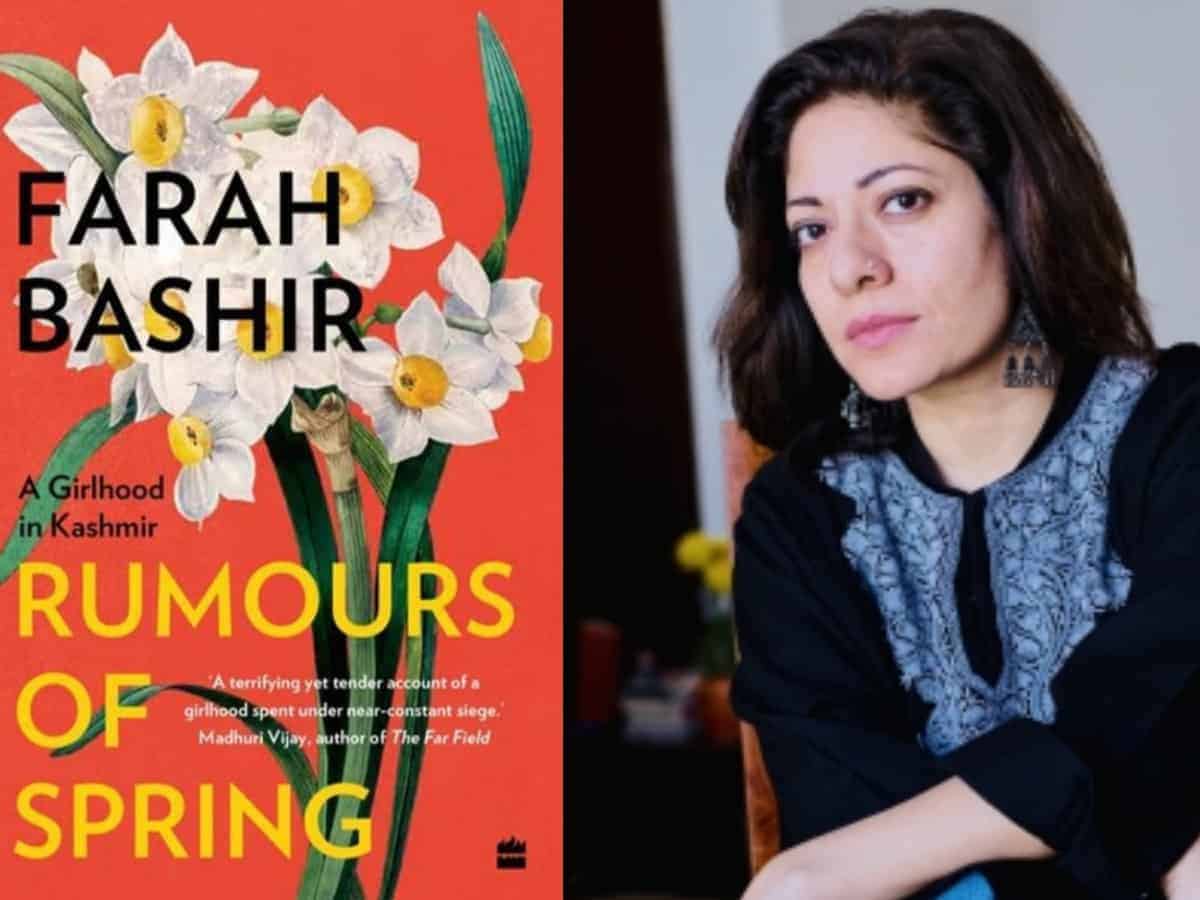New Delhi: When she sent a picture of brooding girl, sitting atop a shikara, to Times square, one of her editors commented that it looked too grim to be sent where it would be flashed a few thousand times its original size. Working for an international news agency in Singapore, that was the moment she knew that it was important to do something that would represent her people. A year later, in 2008, she quit her job and began to write.
Author Farah Bashir, whose debut novel ‘Rumours of Spring – A Girlhood in Kashmir’ (HarperCollins) hit the stands recently, which looks at her years between 1989 to 1994 spent in the valley, says, “The Kashmir conflict, as we know it, has always been reduced to binaries, so it became imperative to de-saturate home from all kinds of significance and see it as an ordinary home and the losses it suffered.”
The first chapter of the book — ‘The Day I Was Dead’ documents the metamorphic hour in 1989 which changed the face of Kashmir as its residents knew it. “But even before that, I do recall endless periods of curfew during the rigging of elections in the late 80s.”
A freelance consultant now, who spends time between the valley and where her work takes her, the author says that it was an intentional decision to look at everything through teenage years. “I borrowed a lot of courage and resilience from my teenage-self and it became important to examine the kind of circumstances from then.”
Adding that it was important to revisit how women and children who survive wars grow up, and what kind of scars and joys inform their lives, she says that women, when threatened by external circumstances have very different coping strategies. “Looking back at those memories helped me understand and write about them. As our land and lives continue to be transformed fundamentally by a pitiless conflict, as the arc of the moral universe doesn’t seem to bend toward justice, remembering and processing the 1990s, the crucial years of my adolescence became necessary.”
For her, as a teenage girl, growing up in a conflict-stricken territory happened to be a dual struggle: To make sense of the militarisation of domestic spaces and to learn new social etiquette — informed by war — to navigate life.
The first literary work on that period (early 1990s) to come out of Kashmir written by a woman, out of 36 chapters, nine are about the author’s childhood while fourteen are about other women associated with her. “Be it a sixty- year- old aunt of mine whose home was burnt down post an encounter and she developed a habit of saluting the paramilitary during their evening patrol or my six year old cousin and her coping mechanism during night patrols on the lake by the paramilitary and how war impacted them.”
Stressing that the book is not about is not only about documenting the conflict as it revolves around the transformation of a young girl into a young woman which coincides with the transformation of Kashmir as the war grinds on, the author says, “The memoir captures the juxtapositions of combat by an ordinary Kashmiri girl and her ways to try and live a normal life, escaping war briefly in her mind by writing her first love letter, imagining an ordinary future during prolonged periods of curfew, and her listening and dancing to songs from banned radio stations.”
Ask her if the lockdown post the abolition of Article 370 reminded her of the ‘curfewed days’ in the 90’s, and she asserts that the fundamental difference between a lockdown in Kashmir and elsewhere is that home does not necessarily and naturally translate into a safe space in Kashmir.
“Everywhere else, being at home means taking refuge from unimaginable horrors. As I write in the book, in Kashmir, stray bullets find their way into the homes, as it happened to a friend of mine whose asthmatic grandmother was killed while opening a window. Another friend’s father was assassinated inside their home. Tear gas or PAVA (synthetic pepper spray) sprayed in the air enters homes choking you, making it painful to breathe. The two are incomparable,” says Bashir who is currently working on a group portrait of women spanning across a decade.

